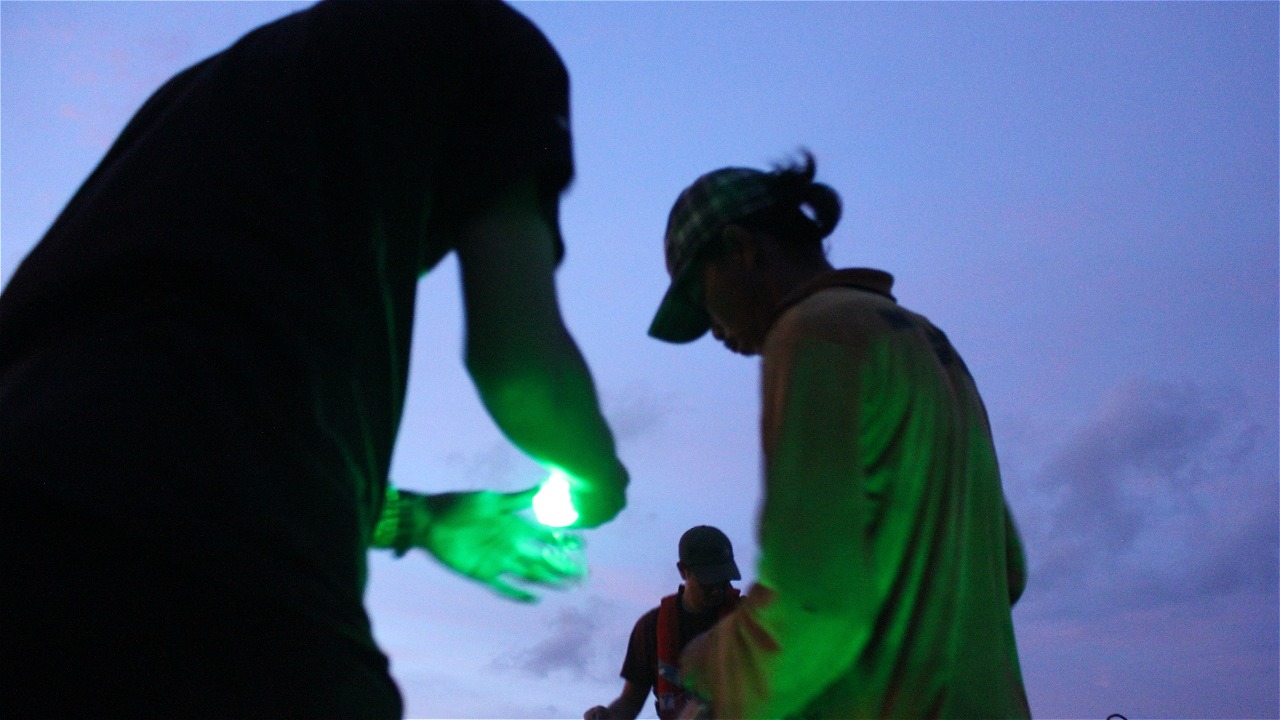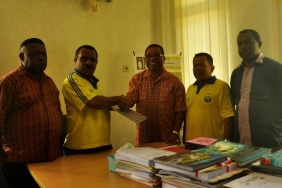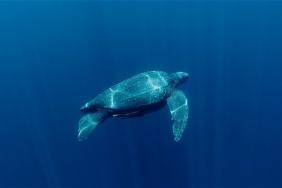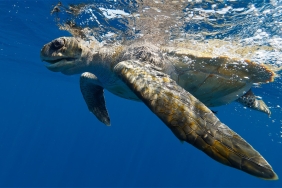GREEN LIGHT FOR TURTLES
By Dwi Ariyogagautama
Walking in the dark of night is dangerous. The same goes for the diverse marine life that swim and forage at night, relying only on moonlight to guide them. They often become entangled in the gill nets that fishermen set out to catch fish. One of them is sea turtles, this protected marine life is among the animals that are often entangled and trapped in gill nets.
Sea turtles are protected animals, both by national and international regulations, due to their endangered populations. In 2013, there were more than 500 turtles accidentally entangled or bycatch by fishermen using gill nets in the waters off Paloh, Sambas Regency, West Kalimantan. This is because the 63 km long beach in Paloh waters is the longest turtle nesting beach in Kalimantan.
Fishermen also complain about the losses they suffer when turtles get entangled in their nets. They have to cut the net wrapped around the turtle and have to repair it first before they can fish again.
Based on the high interaction of turtle bycatch, WWF-Indonesia with the support of the National Oceanic and Atmospheric Administration (NOAA) conducted a series of experiments on fishing gear technology that can reduce the bycatch of endangered and protected biota in Paloh waters. In experiments conducted from April to October 2014, a series of green LED lights were attached to fishermen's gill nets. Research conducted by NOAA indicated that the green light was dazzling to sea turtles but not to fish targeted by fishermen.
In November, WWF-Indonesia used the momentum of National Fish Day to socialize the results of the experiment as an answer to the high curiosity of fishermen since the technology of using LED lights in nets was introduced. The socialization of the results of this experiment was also attended by 36 participants consisting of the Head of Paloh Sub-District, village government, Sambas Regency Marine and Fisheries Office, BPSPL Pontianak, representatives of security forces (Koramil, Polairud, and Bais), Pokmaswas, fish collectors and fishermen.
"Installing lights on our nets, makes the net spreading so dazzling,but the catch is more with these lights." said Pak Pendi, one of the fishermen in Paloh waters involved in this experiment.
The analyzed data indeed showed that the use of green LED lights in the net could reduce turtle bycatch by up to 50%. During the experimental period, only 21 turtles were accidentally caught, including green, hawksbill and Olive Ridley turtles. In addition, the use of LED lights also increased the fishermen's main catches of white pomfret and black pomfret.
Fishermen using LED lights on their nets can get an average main catch of 14.25 kg in each net deployment. This amount is 2 kg heavier than the catch of fishermen without LED lights. Moreover, out of the total main catch of fishermen during the trial period, fishermen using LED lights on their nets caught 4.64% more and thus earned Rp852,000 more than fishermen using nets without LED lights.
The experiment confirmed that the use of green LED lights in gill nets can reduce the entanglement rate of turtles in the net and increase the main catch of fishermen, thereby increasing their income. The application of lighting technology in gill nets in Paloh waters has become a green light to support sustainable fisheries and encourage environmentally friendly fishing gear policies.





